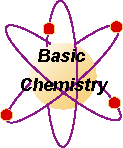Make up the following solutions.
- Solution A: 2.5 grams glucose and 2.5 grams fructose in 50 mL water. Add 0.6 gram tartaric acid, boil , then cool the solution. Add 10 mL ethanol to stabilize and dilute to 100 mL with distilled water.
- Solution B: 4.0 grams of silver nitrate in 50 mL distilled water.
- Solution C: 6.0 grams of ammonium nitrate in 50 mL distilled water.
- Solution D: 10 grams of sodium hydroxide in 100 mL distilled water.
Note: Read MSDS sheets before doing this experiment. Go to the internet icon to find links to web sites that have the MSDS sheets. Follow all safety precautions regarding gloves, aprons, goggles and ventilation. Handle waste according to MSDS or Flinn Scientific directions.
- In a new or scrupulously clean 500 mL flask, pour 10 mL of Solution A.
- Mix 5 mL of Solution B with 5 mL Solution C and add to the flask.
- Quickly pour in 10 mL of Solution D, stopper and swirl. Rotate and tilt the container to keep all surfaces wet. In about a minute a fine silver mirror is formed. When this has occurred, IMMEDIATELY pour the residue into a waste sink with plenty of water and rinse the flask thoroughly to prevent possible explosive mixture formation.
- To clean the flask for reuse, dissolve the silver in 6M nitric acid in a flume hood.
You can purchase the chemicals from many supply houses, but I like Flinn Scientific because you can get small volumes which reduces disposal problems.
Discussion
The formation of the silver mirror is due to the reduction of the silver ion by the reducing sugars glucose and fructose.
Ag+(aq) + 1 e- ---> Ag(s)
The aldehyde portion of the sugar molecule is oxidized by 2 Ag+(NH3)2OH- forming 2 Ag + the CHO end of the sugar becoming COO-NH4+ + 3 NH3 + H2O.
References
Summerlin, L.R.; Ealy, J.L., Jr. Chemical Demonstrations; American Chemical Society: Washington, D.C., 1965; p.88
Kemp, M.; Journal of Chemical Education; 1981, 58, 655
Back to top
Summerlin, L.R.; Ealy, J.L., Jr. Chemical Demonstrations; American Chemical Society: Washington, D.C., 1965; p.88
Kemp, M.; Journal of Chemical Education; 1981, 58, 655


